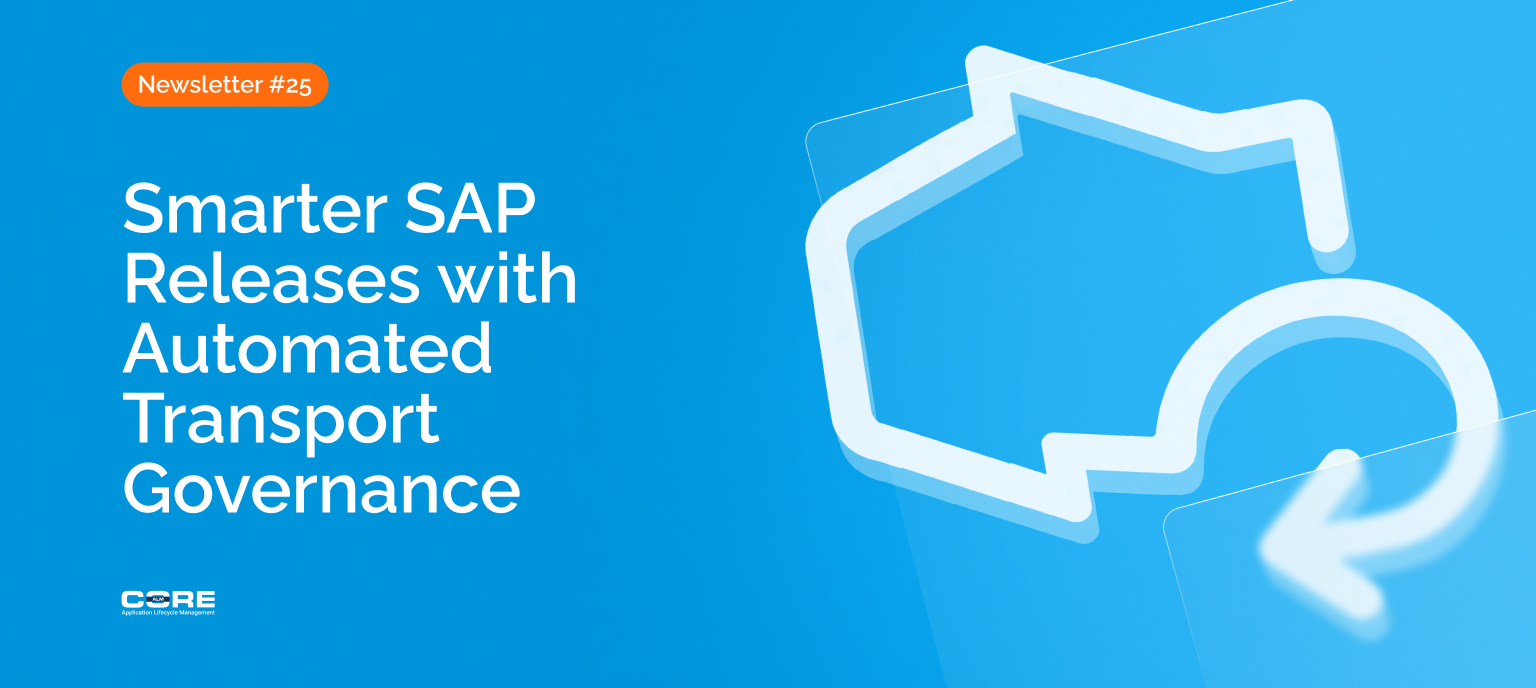Introduction
A fast development cycle means little if SAP production releases still depend on manual controls.
In last week’s newsletter, we explored how SAP falls out of the Azure DevOps lifecycle during development. Once that gap is closed, teams finally see the next barrier clearly. SAP production releases still rely on manual sequencing, manual approvals, and cautious governance practices built over decades of protecting the business from post go-live issues.
That cautious model made sense in the past. SAP outages carry enormous impact, and many organizations still remember production incidents that shaped their governance culture. Over time, this led to a belief that slower is safer.
Meanwhile, non-SAP releases accelerated. Azure DevOps pipelines enforce quality gates, approvals, and audit evidence automatically. Because these controls are built directly into the flow, the flow never needs to stop. This approach has proven both faster and safer, and teams learned to trust that consistency and automation protect the business better than manual controls.
Until SAP production releases achieve the same level of automation, they will continue to lag behind the rest of the enterprise.
A fast development cycle means little if SAP production releases still depend on manual controls.
Why Manual SAP Production Governance Breaks Down
Manual governance processes add time without fully addressing risks.
The delays associated with manual release governance will be familiar to most SAP teams:
Sequencing Problems Appear During Cutover – Even well-prepared teams discover missing dependencies or incorrect transport order during production deployments. Organizations often rely on experts to run manual checks, but when something is missed, teams shift into reactive problem solving, extending the deployment window or delaying approved changes.
Approvals Get Slowed by Uncertainty – In many SAP environments, all transports are treated as if they carry the same level of risk. This forces approvers, who often lack detailed context, to be overly cautious. The result is a slower release process that does not necessarily reduce risk. Governance depends on the diligence and judgment of individual approvers rather than on factual, system-driven data.
Audit Evidence Is Scattered – Approval and validation data exists, but it is spread across Azure DevOps, SAP logs, emails, and spreadsheets. Teams must manually reconstruct the full history for auditors, pulling together fragments from multiple sources. This e
Manual governance processes add time without fully addressing risks.
How Automated Governance in Azure DevOps Resolves These Issues
Automation does not reduce control. It strengthens it by making governance consistent, early, and visible.
CoreALM’s SAP Transport Management for Azure DevOps brings SAP into the same automated DevOps pipeline used by the rest of the enterprise, delivering full SAP transport integration with Azure DevOps and enabling a consistent, governed release process across all applications. The results are significant:
Sequencing and Dependencies Are Pre-Validated – Azure DevOps pipelines automatically analyze transport order, object relationships, and potential conflicts before deployment. Issues that were once discovered during cutover now surface early, allowing teams to correct problems well before the maintenance window.
Approvals Become Structured and Risk-Based – Approvals follow defined rules rather than individual judgment. Change impact analysis and automated test results give approvers the context they need to assess risk confidently and consistently.
Audit Trails Are Captured Automatically – All validations, approvals, and deployment actions run through the pipeline, creating a complete audit trail without manual reconstruction. Evidence becomes a natural byproduct of the process rather than an administrative effort after the release.
By moving these controls into Azure DevOps, SAP production releases shift from manual, reactive work to a consistent, repeatable process that teams can trust. Automated governance replaces uncertainty with clear rules, early validation, and complete visibility, allowing SAP to finally align with the speed and reliability of the enterprise DevOps pipeline.
Automation does not reduce control. It strengthens it by making governance consistent, early, and visible.
Conclusion
Automation does not reduce control. It strengthens it by making governance consistent, early, and visible.
SAP production governance has always aimed to protect stability, but manual processes can no longer keep pace with modern delivery expectations. The problem is not the intent of these controls, but the way they are executed. When sequencing checks, approvals, and audit activities depend on people, delays and inconsistencies are inevitable. These friction points slow releases, increase late-stage risk, and prevent SAP from aligning with the speed of the broader enterprise pipeline.
By moving SAP production governance into Azure DevOps, organizations shift control into the flow of work itself. Automated validations run earlier. Approvals follow clear, risk-based rules. Audit evidence is generated continuously. Cutovers become predictable rather than stressful. This is how SAP stops being the exception and becomes a full participant in enterprise DevOps.
Together with the development alignment covered in last week’s edition, automated production governance completes the model for fast, reliable SAP change. Organizations that take this step not only accelerate delivery, but also strengthen quality and reduce operational risk. SAP can move at DevOps speed. It simply needs a modern, automated governance model that aligns transport management with Azure DevOps to support it.




